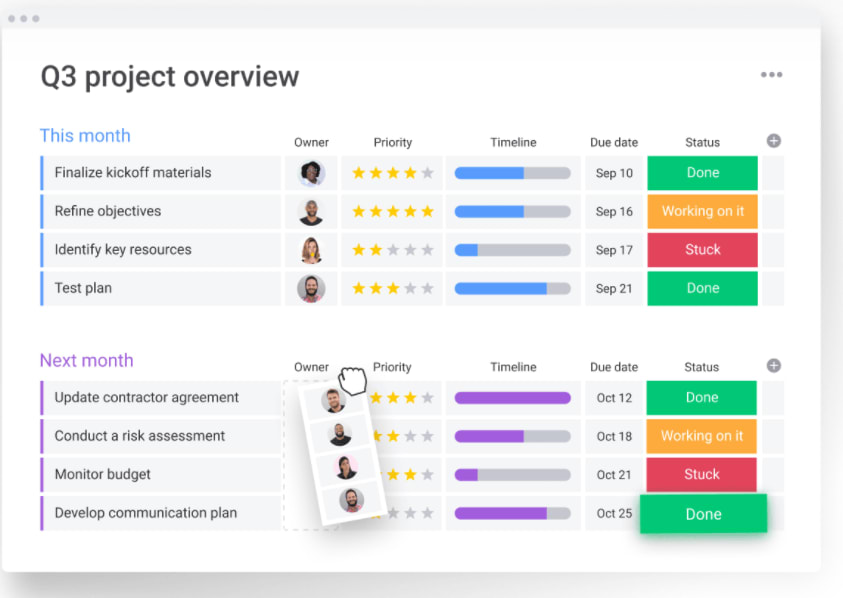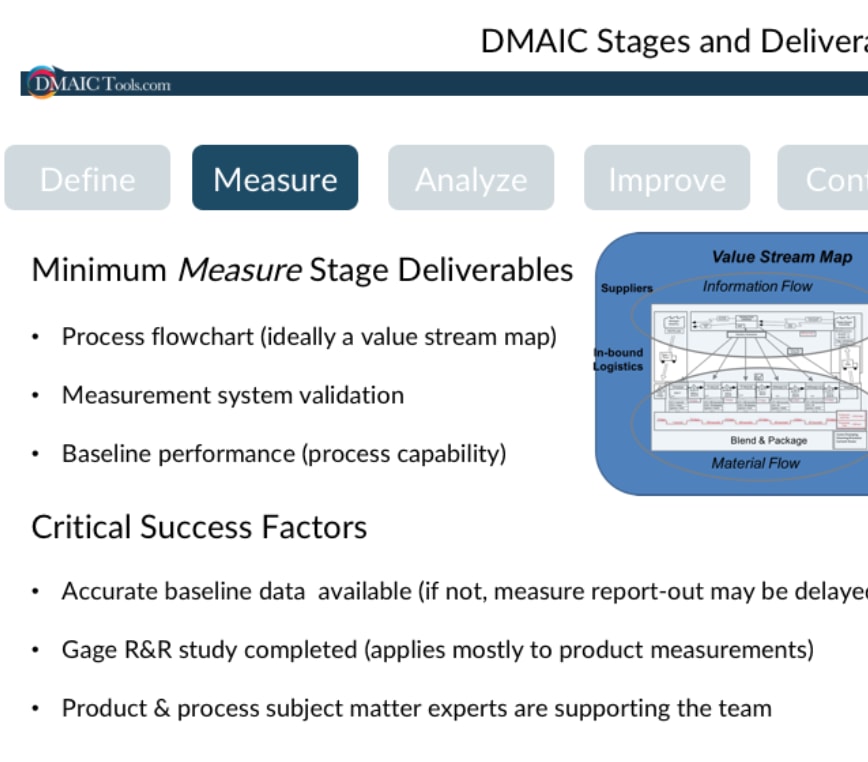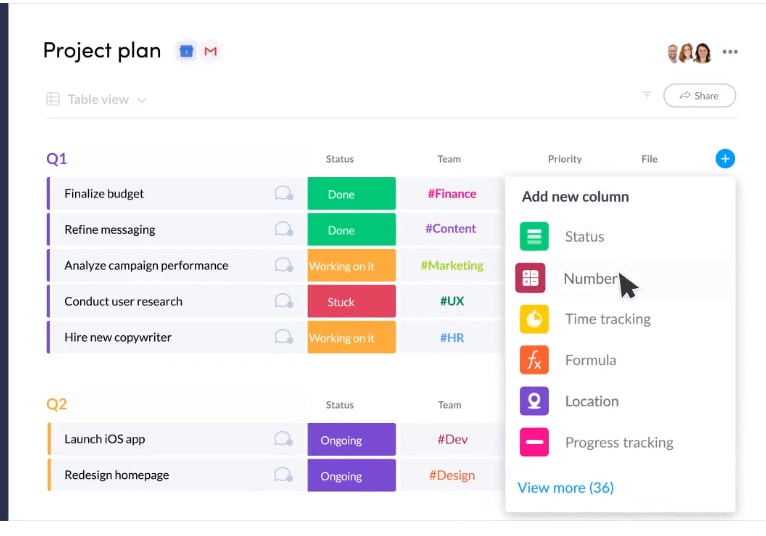Mistakes, errors, wasted time and effort. These are just part of life, right?
It may be a comforting philosophy, but it doesn’t help much with running a business.
In the business world, mistakes eat at your bottom line like a mouse in your kitchen wall. And wasted time means wasted money.
Enter Six Sigma.
This powerful methodology enables teams to organize processes more efficiently. The focus is reducing errors to within six variations (or “sigmas”) from the process mean. In layman’s terms, this translates to no more than 3.4 errors out of every million opportunities.
It’s more complicated, though, than a simple process of organization and error reduction.
If you’ve ever wanted to try Six Sigma, you might feel intimidated by all the details. And you may wonder about the nuts and bolts of implementing this methodology on a practical level.
In this article, we’ll look more closely at the Six Sigma methodology and explore some ways you can apply it in your business.
What is the concept of Six Sigma?
Six Sigma is a methodology that aims for improvement in the overall quality of a product or service. It does so through process improvement. More specifically: it aims to make your business process more efficient.
So what does that look like?
A huge part of Six Sigma, as we’ll see later, has to do with measuring and analyzing data about business processes and customer satisfaction. Even the value of the statistical tools and the data itself is monitored for continuous improvement.
Using a process improvement platform like monday.com you can visualize your work data better and hone in on what needs improvement.
For example, a chart like the one below is one of many statistical tools Six Sigma uses to reveal progress toward specific goals, such as risk assessment and communication.

A quick glance can reveal what processes are taking more time and the spots where team members get stuck.
This data forms just a small part of the bigger picture as the team strives for process improvement.
It also helps when you can visualize this data in multiple forms such as task boards, Gantt charts, dashboards, and reports. So you can slice it in different ways to look for patterns, trends, and anomalies.
This process of continuous analysis and quality improvement has proved to be a highly effective methodology. Several well-known companies have used it to reduce errors and improve their bottom line. We’ll talk about these later.
Why is it called Six Sigma anyway?
When looking at a bell curve, a “sigma” represents one standard deviation from the mean. Thus, the number 6 represents a low occurrence of defects, no more than 3 above or 3 below the mean.
Alright then, how does Six Sigma work?
Employees can become practitioners of Six Sigma through specialized training and certification.
These qualified employees then facilitate implementation of Six Sigma through the DMAIC (Define, Measure, Analyze, Improve and Control) process or the DMADV process (Define, Measure, Analyze, Design, and Verify.)
Let’s quickly explain each stage:
Define
In the first phase of the process, you must define the problem. What, specifically, do you want to fix or improve?
Measure
In the second step of the DMAIC methodology, practitioners measure the overall performance of your current processes.
This can include recording activities, assessing the process capability of meeting specifications, and looking at the frequency of problems.

Analyze
Instead of jumping to a “quick fix,” the Six Sigma model involves taking time to carefully analyze the root cause of any problems in process capability.
Improve
Practitioners design possible solutions in response to these root causes, and then measure the results as they implement them.
It’s important to involve all team members in this process.
Control
Once the team has succeeded in solving any process problems, they must put a plan in place to control future performance and monitor continuous improvement.
Design
Under the DMADV model, analysis leads to the design of an alternative solution (instead of improving on the current process).
The design should be detailed, high-level, and directly linked to the root causes of identified problems.
Verify
Like the “Control” stage of DMAIC, this is the last stage in the process for DMADV. It remains in place until the next process improvement cycle begins. Team members continuously evaluate processes and make adjustments as needed.
What is an example of Six Sigma?
Over 5,000 companies have used (or are currently using) their own variation of Six Sigma successfully.
Let’s focus on a few of the most famous examples to give you a practical understanding of how Six Sigma can be applied in the workplace.
General Electric
After some training, GE implemented Six Sigma methodology in 1996 with a goal of reducing errors and making overall improvements in quality and service.
Today, GE remains one of the giants in the manufacturing world, having substantially improved the overall customer experience and increased revenue thanks to streamlined processes.
Motorola
Motorola is one of the oldest and most famous cases of successful application of Six Sigma. In 1986, they became part of early efforts to eliminate defects and maximize improvements in the manufacturing industry.
Motorola famously took Six Sigma all the way to management level, evolving as the methodology itself did. Qualified employees worked their way up to certification as Six Sigma Master Black Belts (more on belt levels in a minute).
Six Sigma remained a central methodology of the company until 2011 when it split into Motorola Mobility and Motorola Solutions.
While these are the most famous case studies, you don’t need to look far to find another variation of these stories. Amazon, Ford Motors, and Bank of America are among the many big names that have implemented Six Sigma with noteworthy results.
What are the types of Six Sigma?
There are 5 major Sigma levels. Employees take different roles in the process depending on their certification level.
Each level builds on the previous one, like this:

Here are the details about what each Sigma level entails.
White Belt
White Belts are the new initiates to Six Sigma. They have received little to no formal training or certification in Six Sigma.
In spite of this uninitiated status, White Belts are still essential in the overall work involved in Six Sigma. A basic grounding is all a White Belt needs to get on board with a Six Sigma project.
Yellow Belt
This level of certification takes the White Belt one step further. Yellow Belts have participated in a day or two of training, enough for assignment to Six Sigma projects in the role of assistant to those employees with higher certification levels.
Green Belt
Certification as a green belt allows you to help with data collection and analysis on large projects and running smaller projects all on your own.
Students often have a week or more of classroom training plus have completed a relevant workplace project in order to achieve a Green Belt.
Black Belt
After achieving Green Belt certification, professionals can take on the advanced, rigorous training that leads to a Six Sigma Black Belt.
As part of this training, students take on a larger, more complex, and generally longer project which allows them to use what they’ve learned in a real-world context.
Master Black Belt
A Six Sigma Master Black Belt has the expertise to lead teams of Black Belts and Green Belts. They can also take on training of less advanced Six Sigma practitioners. The skilled Master Black Belt becomes a kind of internal consultant to the company.
How to get started with Six Sigma
Corporate managers commonly use Six Sigma for quality control and/or project management.
It’s a helpful methodology in any situation where an unknown root cause of error exists, or when multiple approaches to solve a problem have failed.
Using a project management platform like monday.com helps practitioners carry out this methodology effectively.
Here’s an example of what that might look like:

As you can see, this platform makes it easy for you to track how well your business processes are working.
You can see exactly where your team needs to focus more efforts, which processes are going smoothly, and the areas which may need fine-tuning.
The features in monday.com are designed to aid the detailed measurement and analysis which are integral to Six Sigma.One of these features is its bug tracking template, pictured below. This template yields the data you need to reduce the numbers of defects and errors in your final product.
![]()
Conclusion
Six Sigma is a powerful methodology which can be harnessed by a company as a whole or even just for an individual project.
Leaders need to be properly trained in the statistical methods of Six Sigma if you want to get the most out of it.
But monday.com can help participants get a head start by making it easy to analyze data, communicate with customers and team members, and track progress on tasks all in the same place.
Contact monday.com to find out more about how you can use the Six Sigma methodology to improve quality and efficiency in your business.

